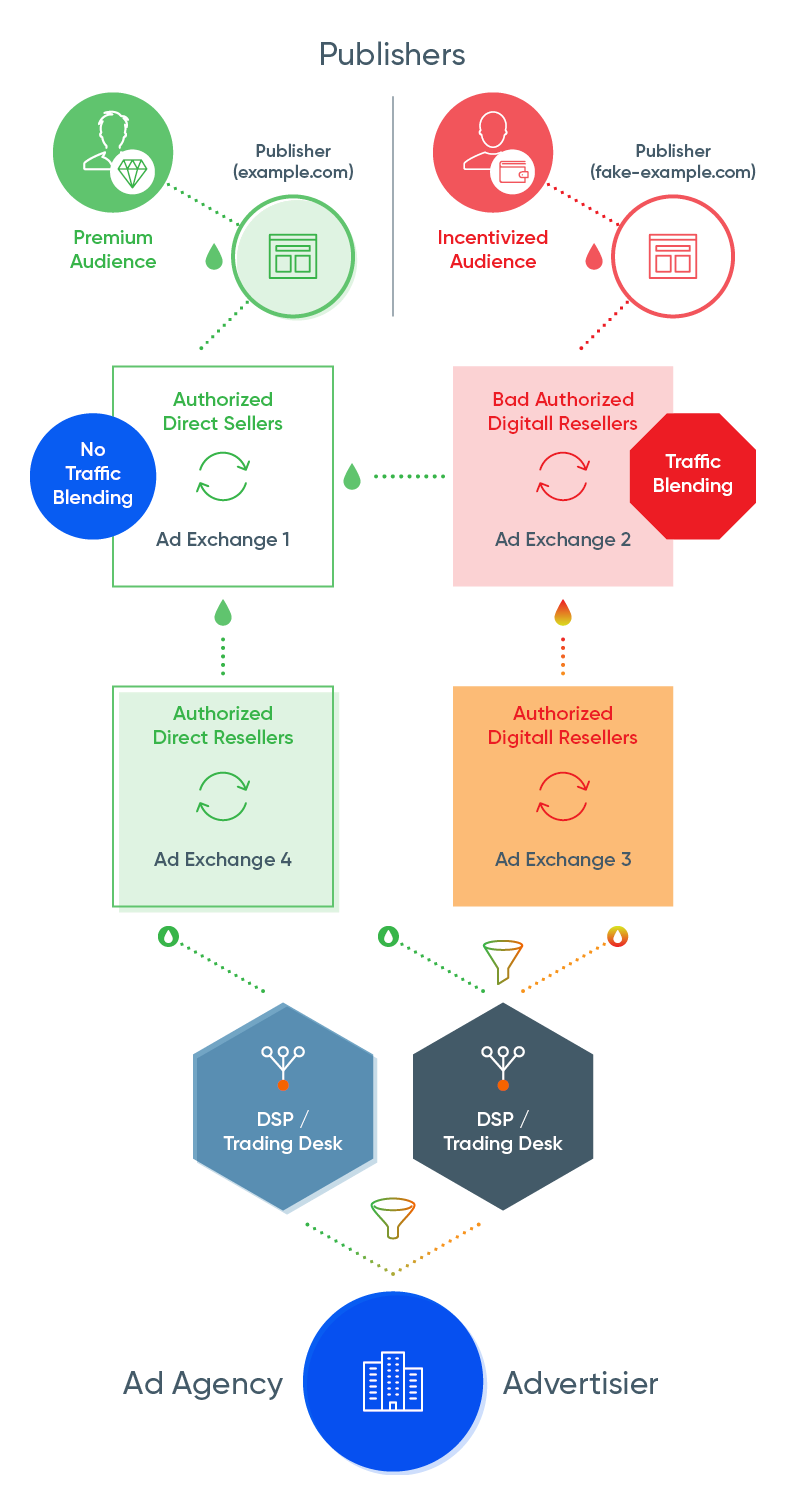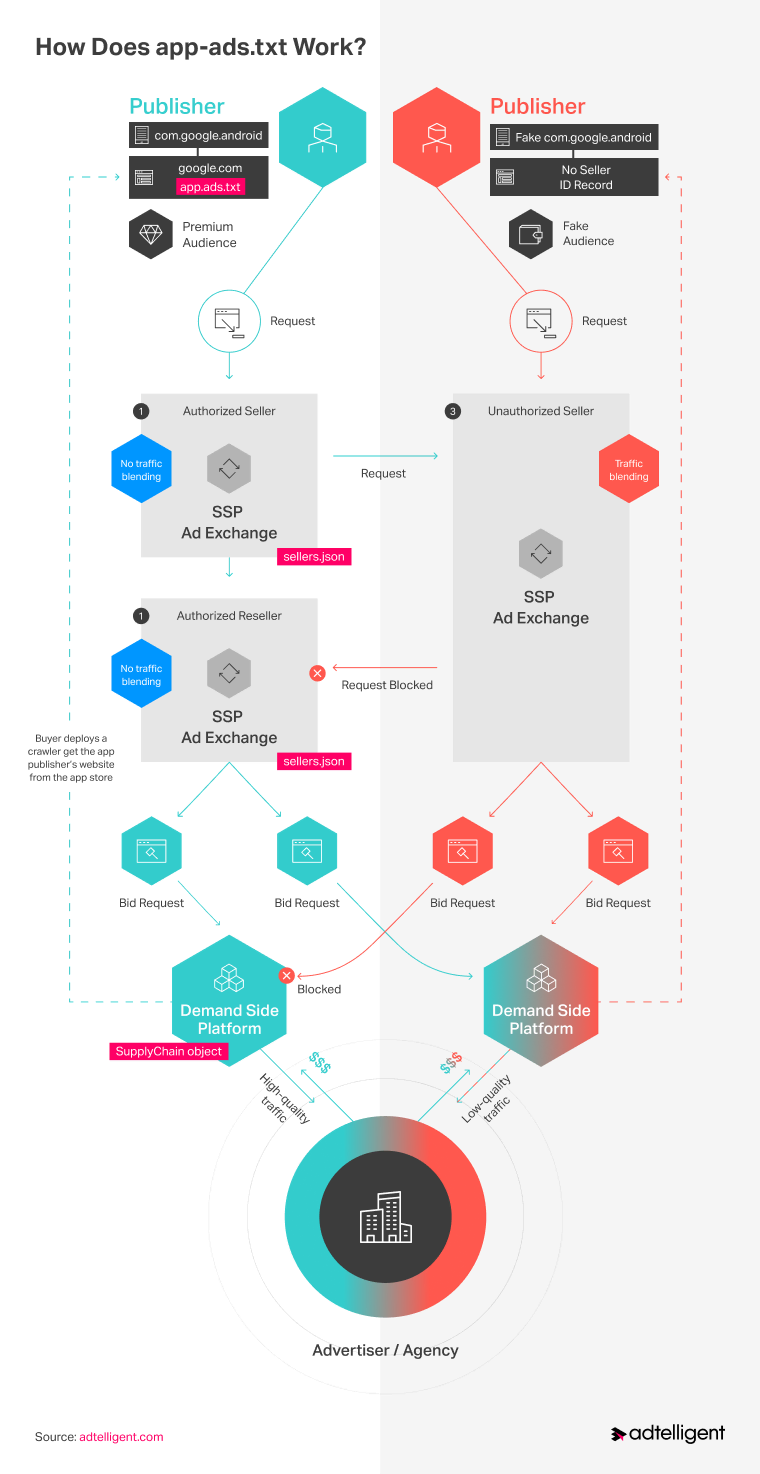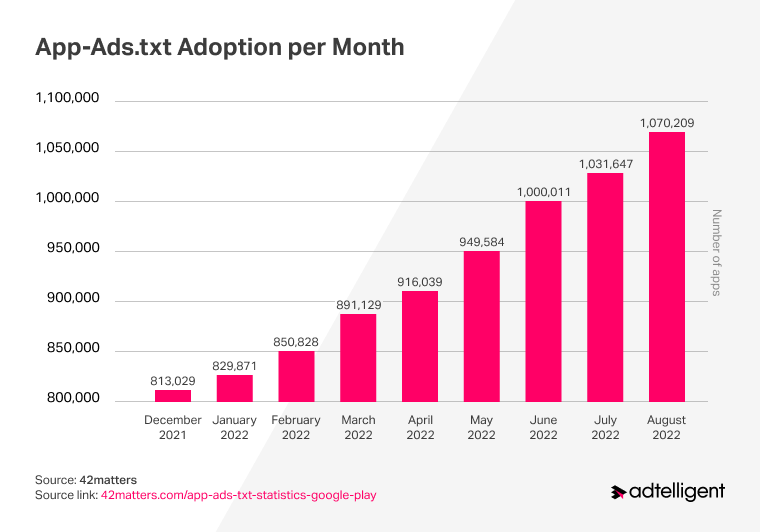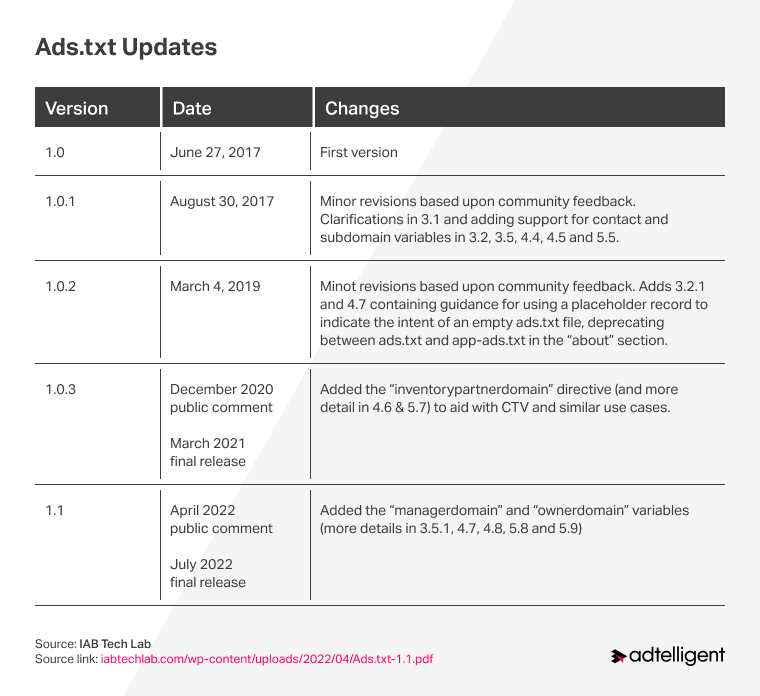Last Update: 9/19/2022
But how will that work, and are there any concerns? The answers are below.
Table of Contents
How did the industry come to ads.txt?
With the rise of the Internet, digital ads have become the driving force for many brands. Increasingly efficient technologies have evolved with programmatic ad buying, enabling precise targeting based on big data volumes and extended measurement metrics. Nearly universally acknowledged as the direction for efficient media buying nowadays, it guarantees lots of gains to publishers and advertisers’ parties.
This situation created an unprecedented scale and streamlined process of media optimization available in programmatic. Using an RTB-based open exchange is a lovely prospect for brands looking to gain the maximum return on their marketing budgets. On the other hand, ad fraud also follows the revenue, including the well-known nightmare for all the programmatic buying chain participants – domain spoofing when a real domain name is hijacked. Hence, advertisers think they are buying an impression on a premium site. The more valuable ad placement is, the bigger the risks. For example, the Russia-based botnet that generated an estimated $3 to 5 million per day – targeted the premium video advertising ecosystem. The operation spoofed around 6,000 premium domains and used bots to watch around 300 million video ads on these falsified sites daily. This is probably the most significant case of a massive proliferation of misrepresented inventory.
Here is where ads.txt comes into play
To eliminate the ability to profit from counterfeit inventory in the open digital advertising ecosystem, IAB Tech Lab has proposed a new open standard for improving transparency in the digital programmatic supply chain.
What is ads.txt?
The solution is called ads.txt (Authorized Digital Sellers). It represents an easy-to-implement and secure process of declaring who is authorized to sell publisher inventory by simply listing Seller IDs in the ads.txt file.
How does ads.txt work?
A publisher must place an ads.txt file that lists all of his authorized sellers in the website’s highest-level directory (or the domain’s root). Programmatic buyers can scan ads.txt files using a reference crawler written by the IAB OpenRTB Working Group to match the ads.txt lists against the data available in the OpenRTB protocols.
Is it generally applicable?
The spec meets only the most common scenarios, and there are numerous open items:
- In the 2018 update, IAB Tech Lab created an app-ads.txt specification for non-web environments like mobile apps and OTT/CTV solutions, but there is a low adoption rate.
- Ads.txt isn’t ready for those who are in Content Syndication. When working with content syndicators, a buyer must verify at least two pieces of information. First, it’s essential to validate the domain through which the content is syndicated; second, the domain from which the content is produced.
- Ads.txt is ready for the four most common formats (Banner, Audio, Video, Native), leaving aside many new and widely adopted formats. Additionally, many publishers partner with different exchanges for different ad formats. That means publishers must reach out to many platforms to gather their seller accounts’ IDs in a single place.
- Some publishers block the identity of their websites (so-called blind/anonymous inventory) to protect their direct-sold models. The only thing the parties can do here is to build blind trust between themselves.
The other major opportunity for fraudsters to make profits is traffic blending, which the IAB OpenRTB Working Group perfectly illustrates with the example of a brand coffee blend.
Why are fraudsters still getting revenue?
Let’s say you go to a premium coffee store; you probably will get an authentic blend of coffee beans for $25 per pound from a specific brand. However, if you go to a grocery store and buy the same brand for $7, it’s probably 5-10% of the declared brand, and the rest is something else. So to market you a cheaper product, they’ve blended authentic beans with unauthentic ones. It works in the same manner as media buying. Imagine you, as a DSP, have several ad exchanges where you purchase your audience reach. However, one of the exchanges is selling you misrepresented domains blended with original domains to meet your criteria. You’d like to know which domains are fake and cause you all those issues, but that is not very easy to identify, considering how huge the volumes of domains are, especially when a single domain can come from several exchanges. See the chart below (Traffic blending) that gives you a detailed description of the traffic blending process.

What is app-ads.txt?
Authorized Sellers for Apps or app-ads.txt is an extension to the ads.txt standard developed by IAB Lab to gain more control over the app ad inventory and the channels it is being sold through so they are authorized. It also helps to avoid a decrease in ad revenues and is designed to protect ad inventory, and improve the compatibility of mobile ads, specifically in in-app and over-the-top (OTT) environments. In addition, the buyers would know that the impressions come from a verified seller after using the app-ads.txt stated on the app developer’s website.

In the graph below, you can see the rate of app-ads.txt adoption on Google Play. There are more than 1,070,209 apps on Google Play that have leveraged app-ads.txt. However, the adoption grew exponentially, with a 7% growth rate over the last 3 months, with 29.77% of all Google Play apps using the extension.

The latest update, ads.txt 1.1
Since its initial launch in 2017, Ads.txt has successfully reduced the number of fraud cases in the programmatic advertising environment. It was particularly great at eliminating “domain spoofing” and sanctioned ad inventory sales. In addition, after sellers.json, another functional presented specification, the supply chain became even more transparent with the further disclosure of sellers.
All these additions and updates opened up a path to a more comprehensive supply chain vision. In the table below, you can see all the changes that happened to the solution over the years.

No solution is perfect, and from time to time, some companies, SSPs/Ad exchanges still face some challenges with ads.txt. The latest 1.1 version of ads.txt aims to keep all of the benefits connected to fraud mitigation while improving transparency and facilitating clearer and defined seller relationships with the help of sellers.json.
To be more precise, this update improved on such points:
- Dealing with Supply Path Optimization (SPO) by linking ads.txt/app-ads.txt directly to sellers.json to accurately depict .txt files’ direct and reseller values.
- Introduction of the primary inventory sellers: There is a possibility to have exclusive rights to represent the publisher’s inventory now. Sometimes the most obvious route for publishers is to outsource monetization and sell ads through resellers. The new update allows resellers to claim primary rights using the MANAGERDOMAIN string.
- Better differentiation between owners and operators. With the improved connection between sellers, domains from sellers.json, and the ads.txt file, there is a new way to identify owned and operated domains or apps with the entities that own the domain or app in question.
Considering the fact that the solution is simple and doesn’t require additional development and resources we all hope to see implementation rate grow accross all web and in-app publishers recently, what is very promising.